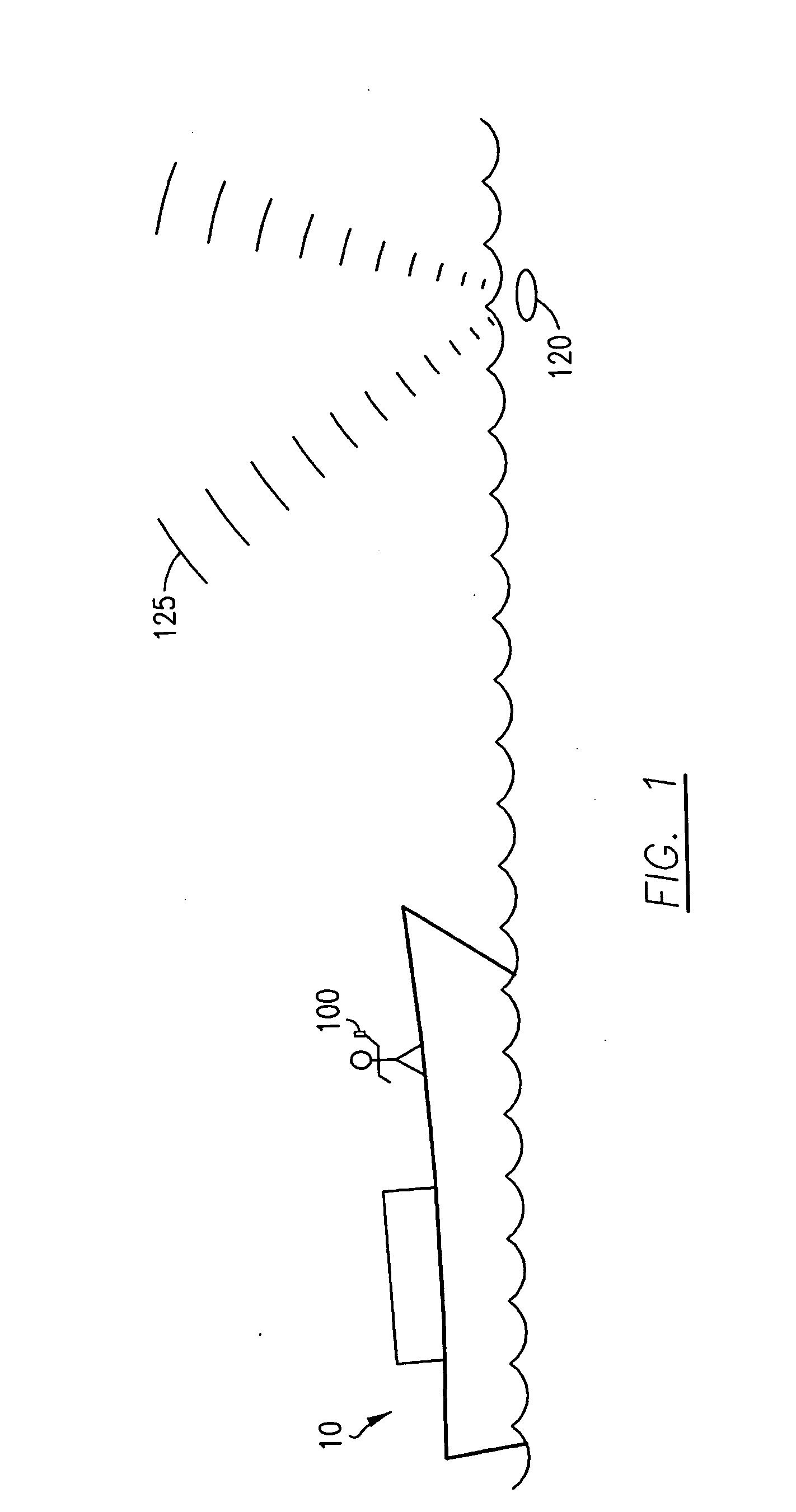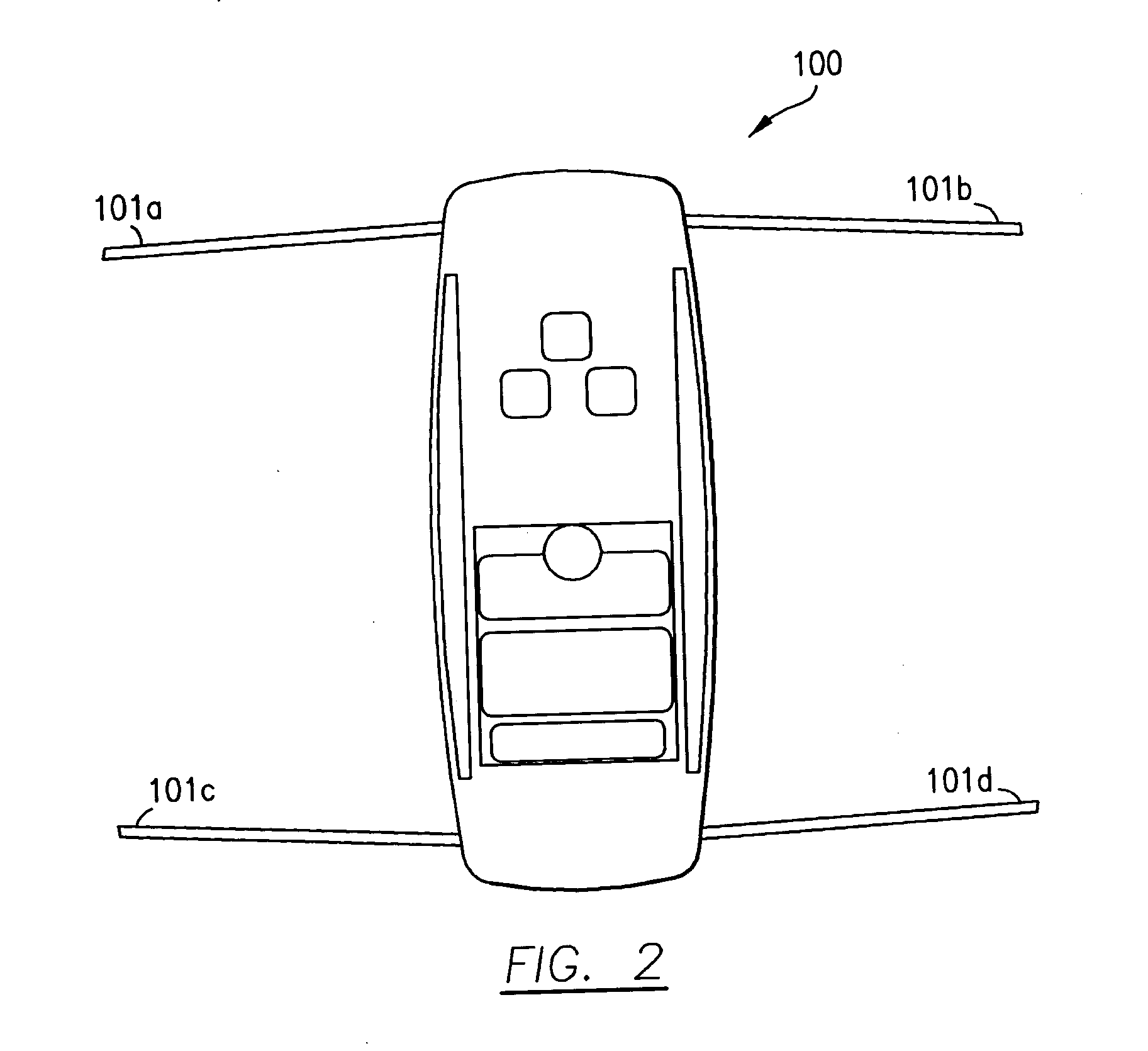Direction and distance finder for locating distress signals
a technology of direction finder and distress signal, which is applied in direction finder using radio waves, instruments, reradiation, etc., and can solve problems such as dramatic increase in the slope of the path
- Summary
- Abstract
- Description
- Claims
- Application Information
AI Technical Summary
Benefits of technology
Problems solved by technology
Method used
Image
Examples
Embodiment Construction
[0029] The present invention provides a system and method that enables swift and accurate location of a RF signal source such as emitted by a distress beacon. The present invention advantageously uses path loss slope readings in order to eventually locate the RF signal source that is transmitted by the distress beacon. The present invention enables a user to acquire data with a handheld device and determine direction and distance of a RF signal source. The direction is determined based upon signal strength and the distance reading may be determined based upon power level changes that occur over the distance traveled, defined as power path loss slope.
[0030] Referring now to FIG. 1, a symbolic exemplary overview of a rescue directional locating system according to the present invention is shown. A RF transmitting beacon 120 floats on a body of water or is attached or held above the water by a person requiring location and rescue depicting a search and rescue situation. However, the p...
PUM
 Login to View More
Login to View More Abstract
Description
Claims
Application Information
 Login to View More
Login to View More - R&D
- Intellectual Property
- Life Sciences
- Materials
- Tech Scout
- Unparalleled Data Quality
- Higher Quality Content
- 60% Fewer Hallucinations
Browse by: Latest US Patents, China's latest patents, Technical Efficacy Thesaurus, Application Domain, Technology Topic, Popular Technical Reports.
© 2025 PatSnap. All rights reserved.Legal|Privacy policy|Modern Slavery Act Transparency Statement|Sitemap|About US| Contact US: help@patsnap.com



